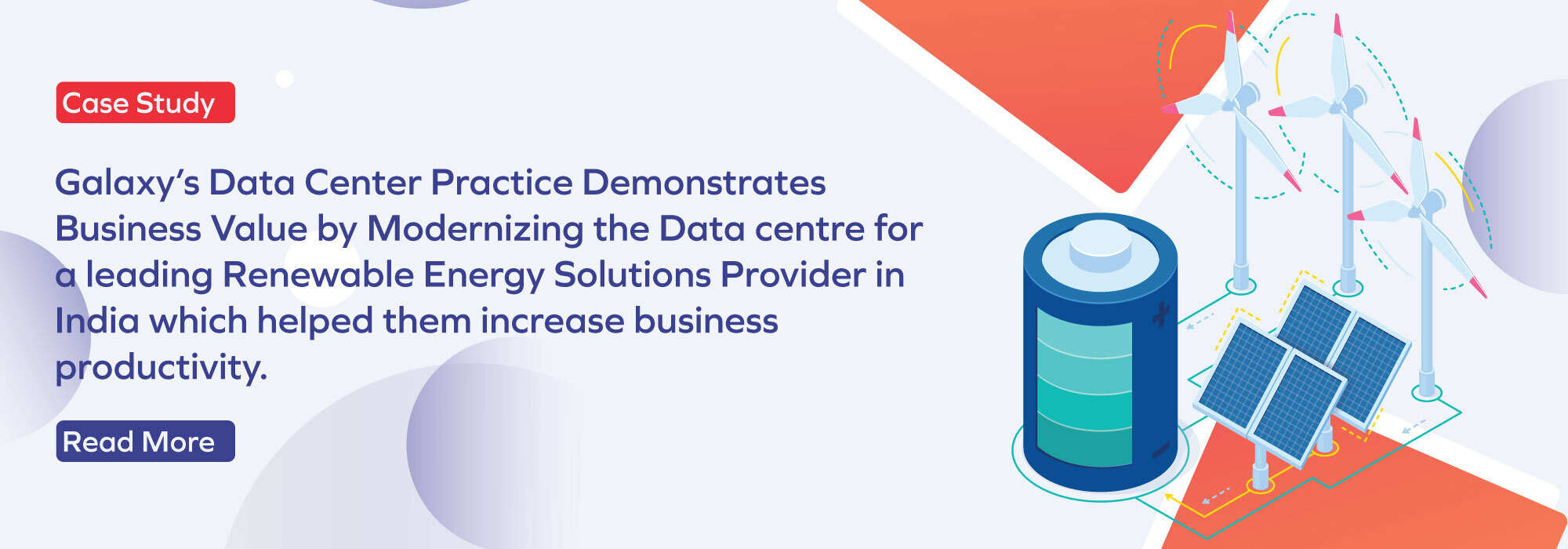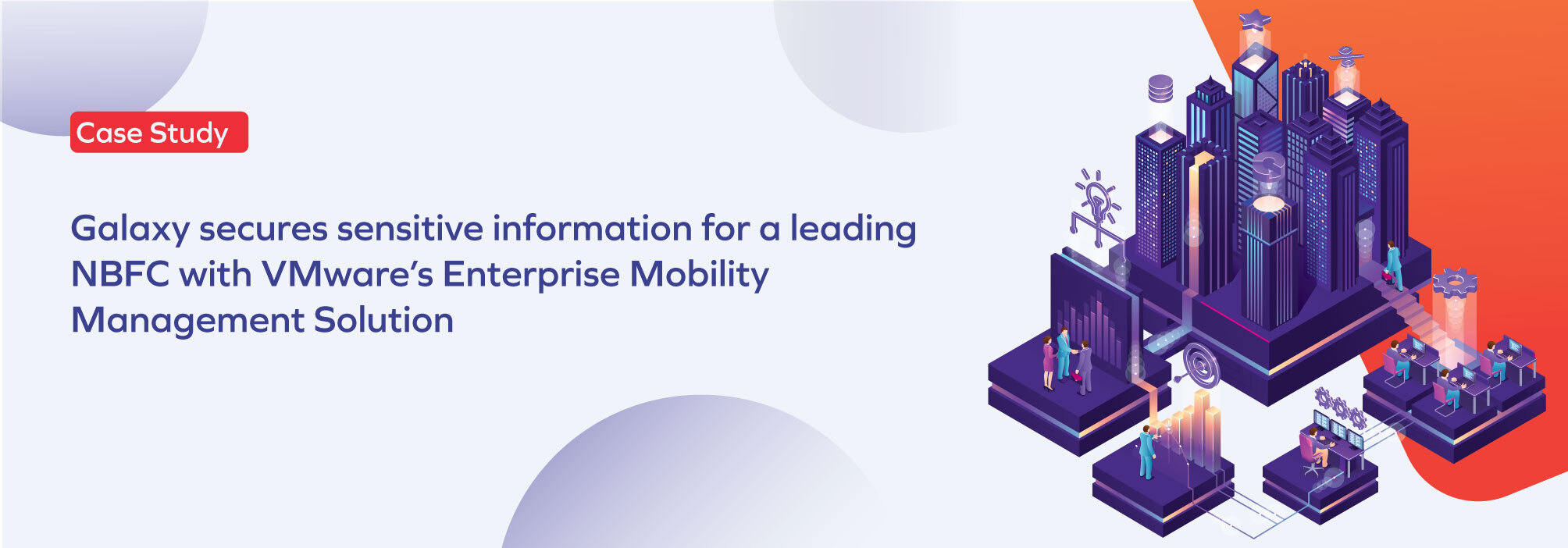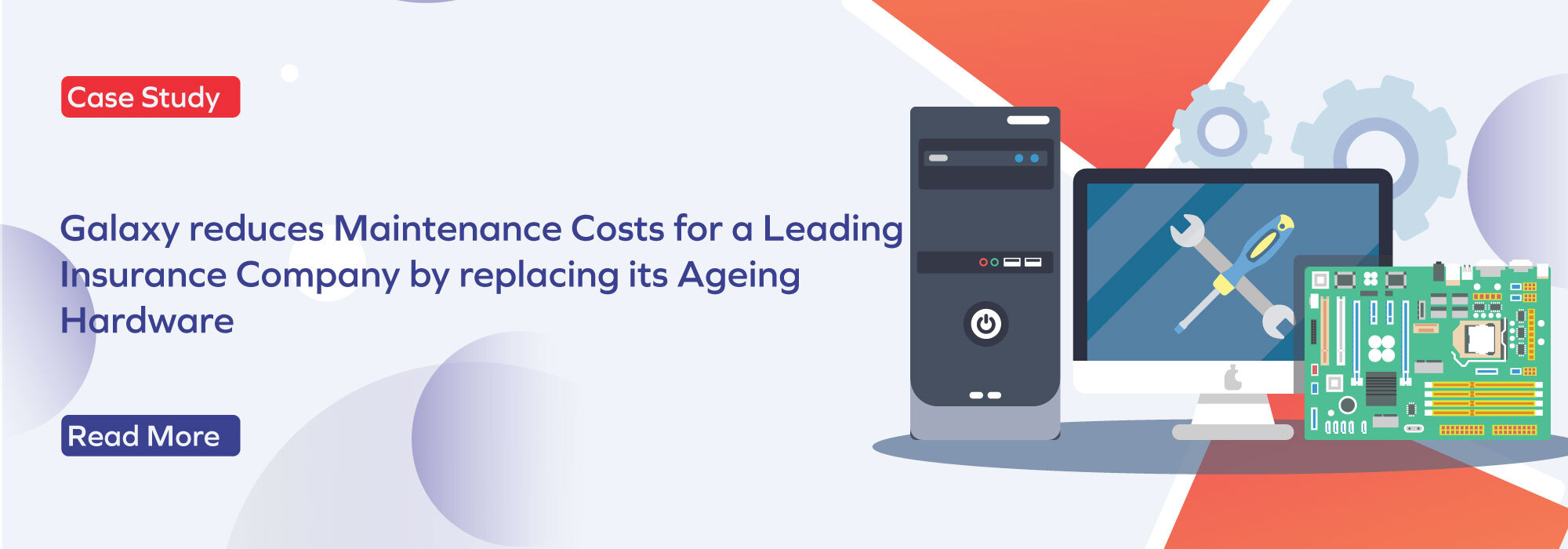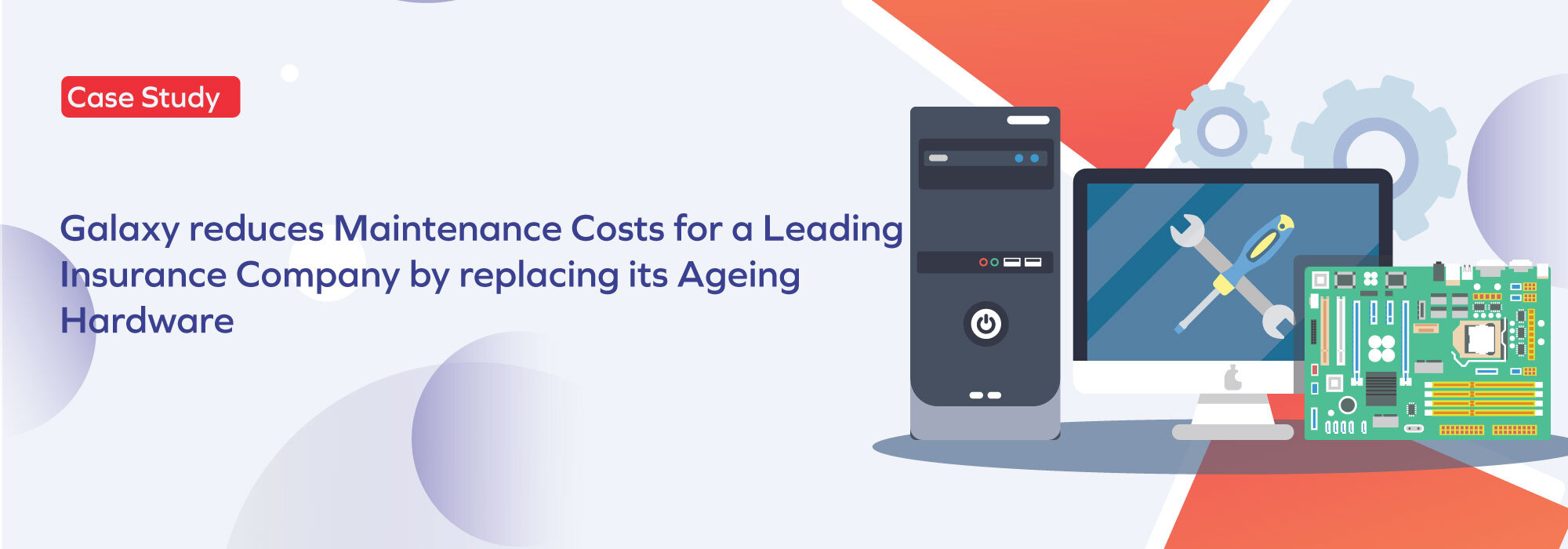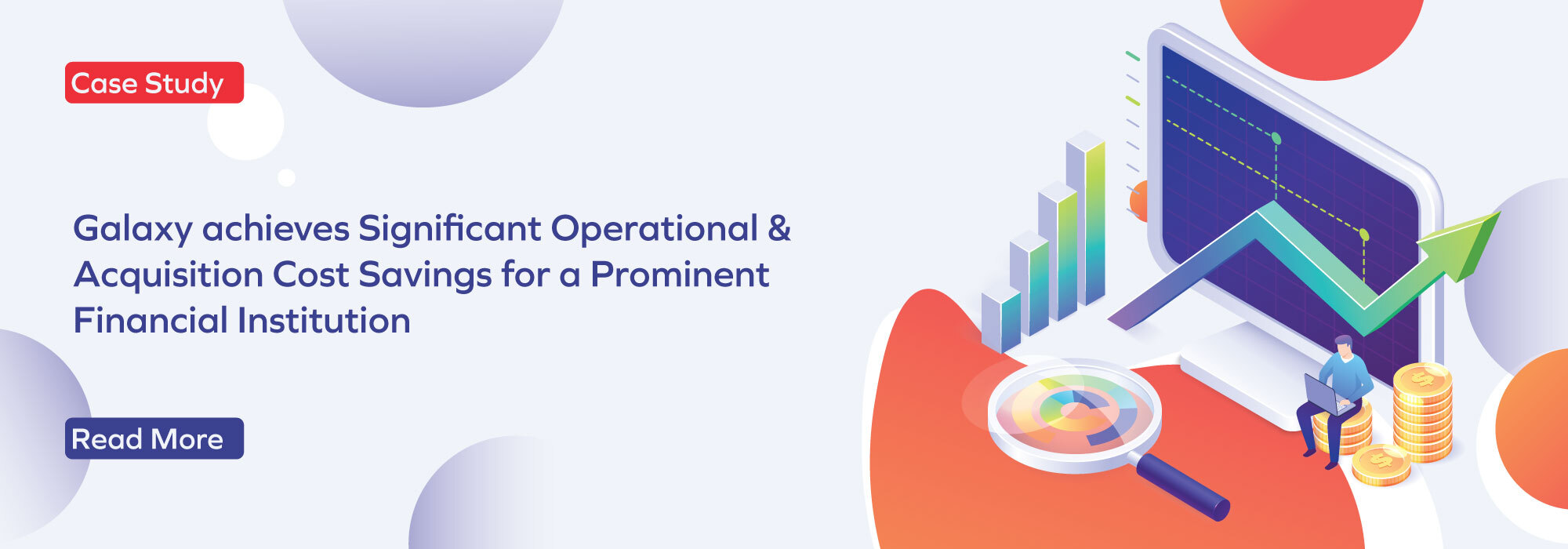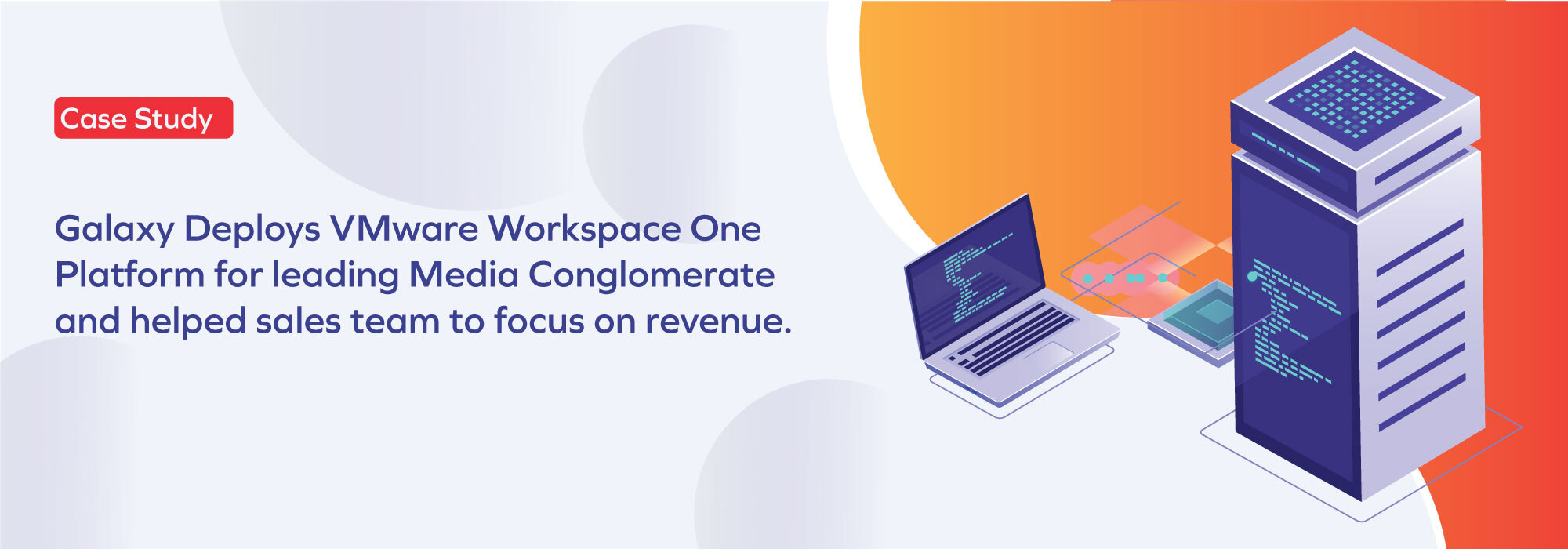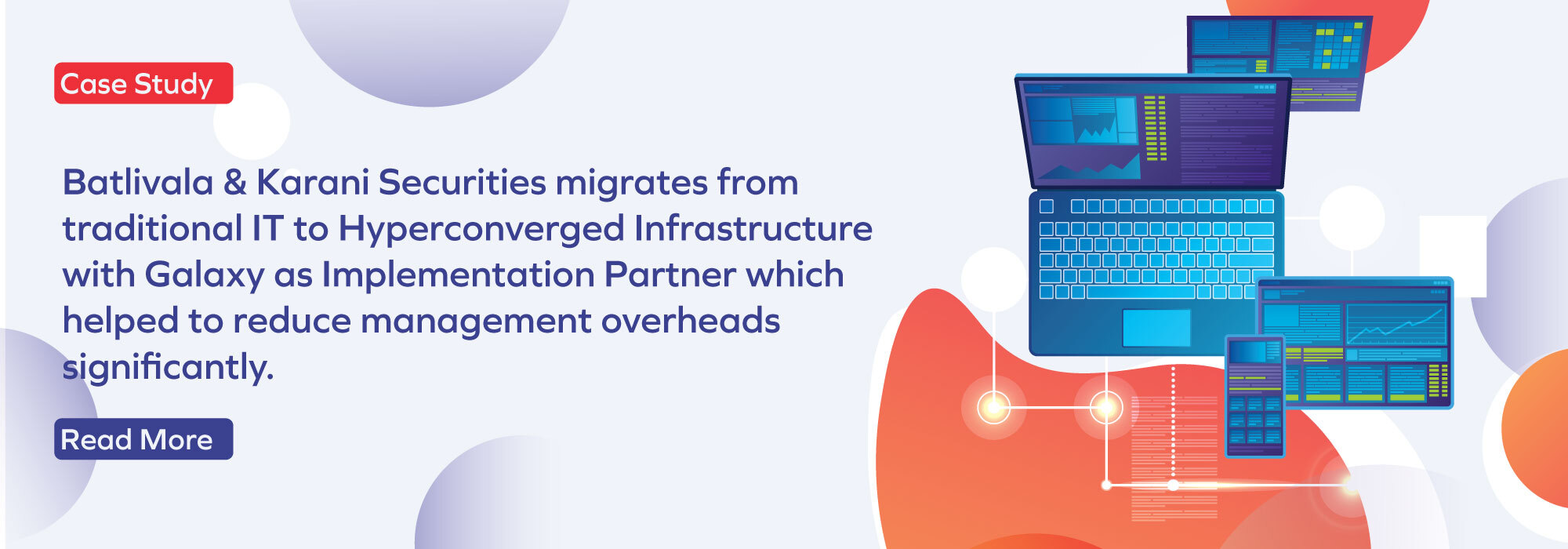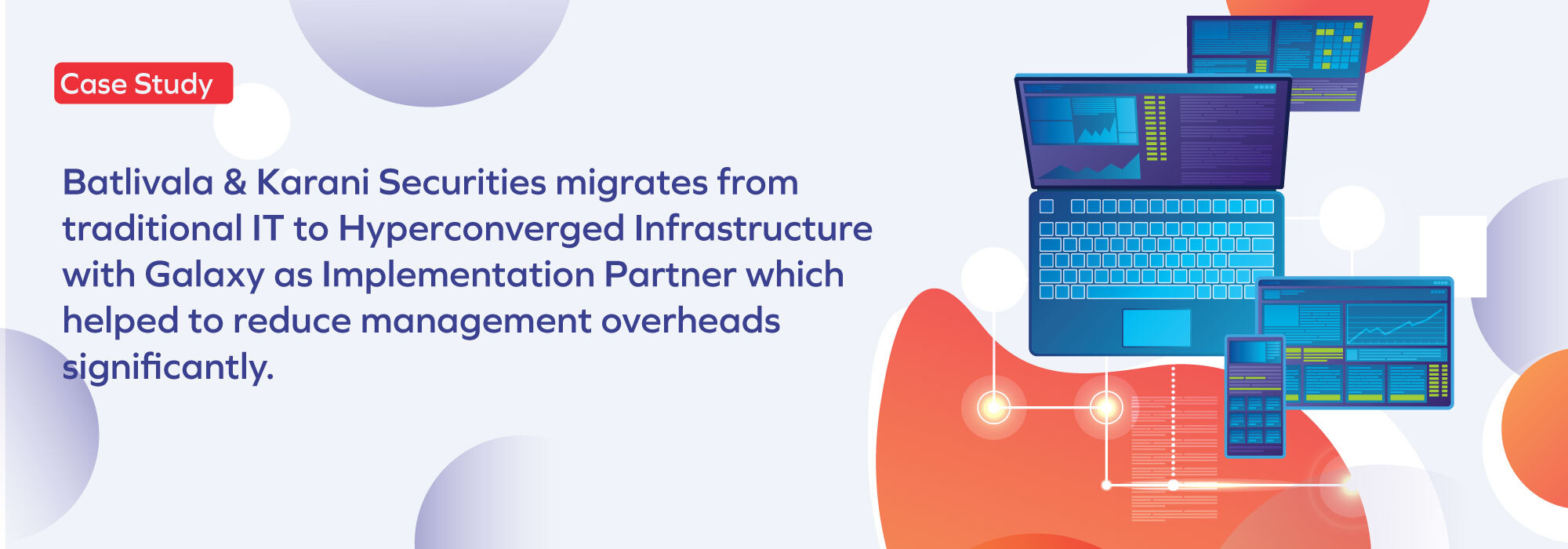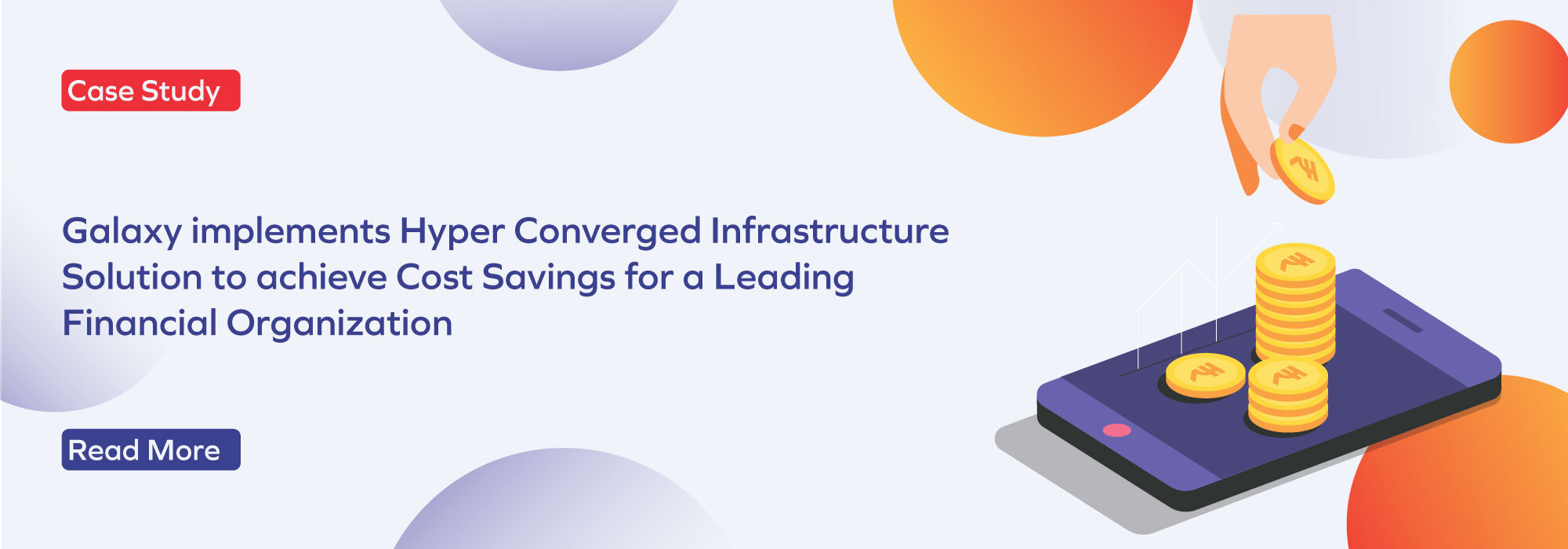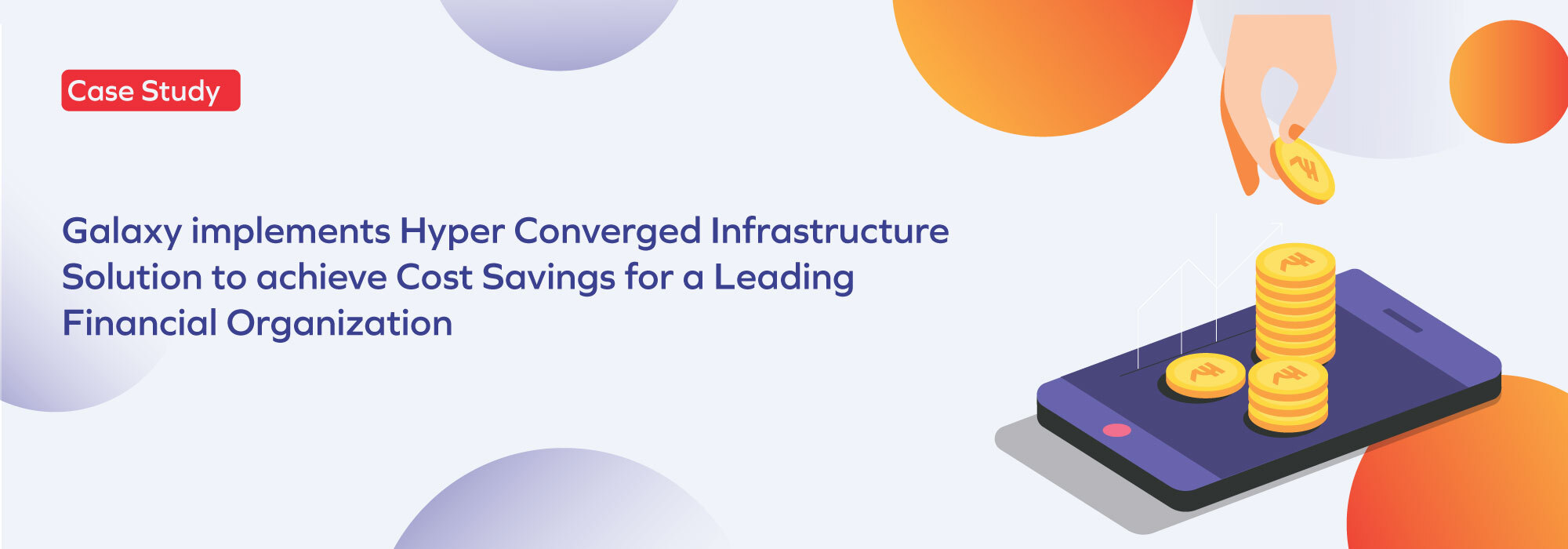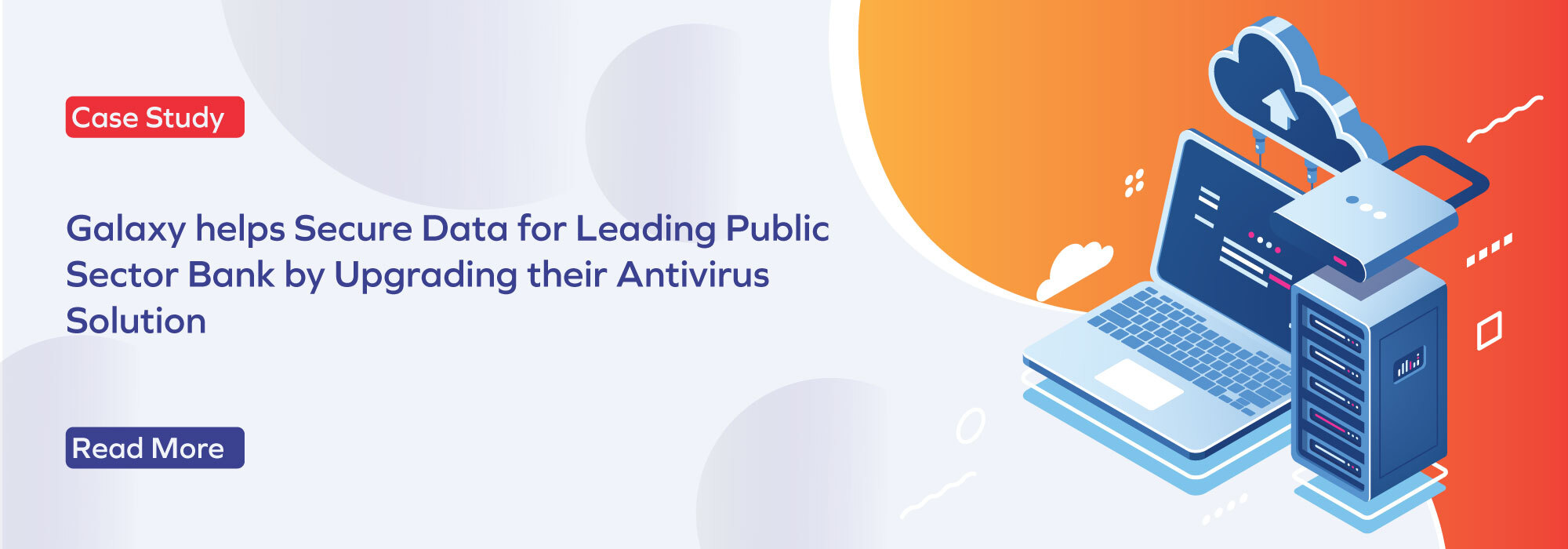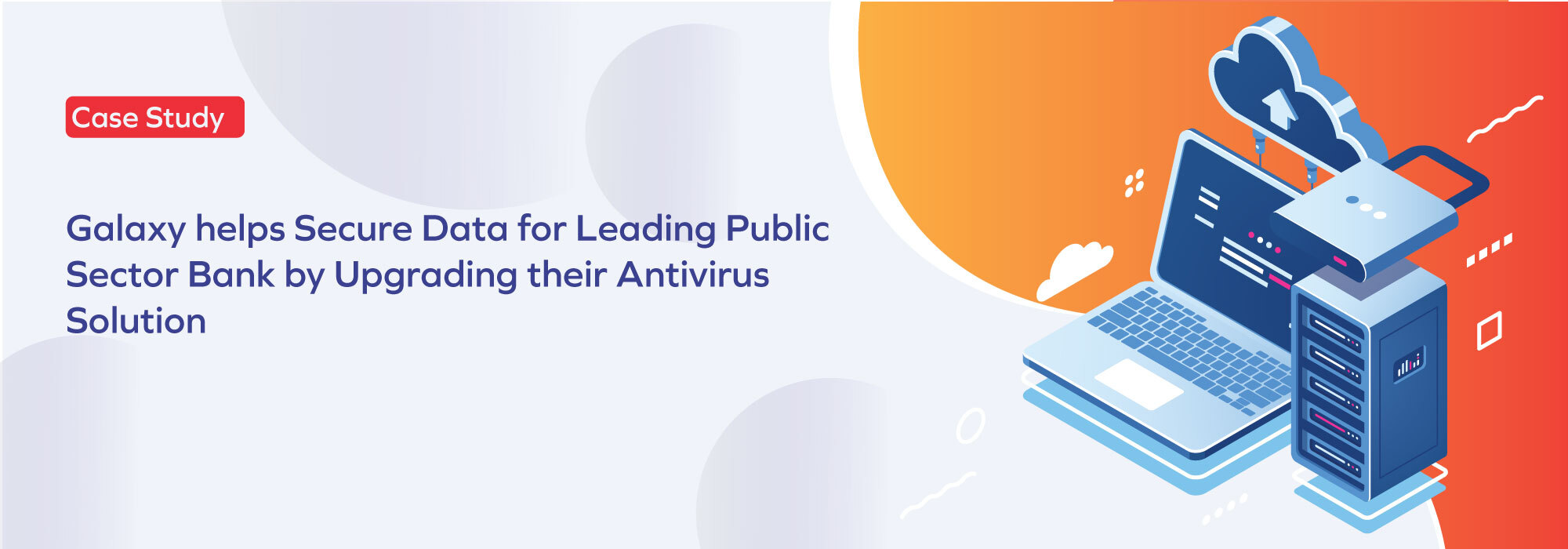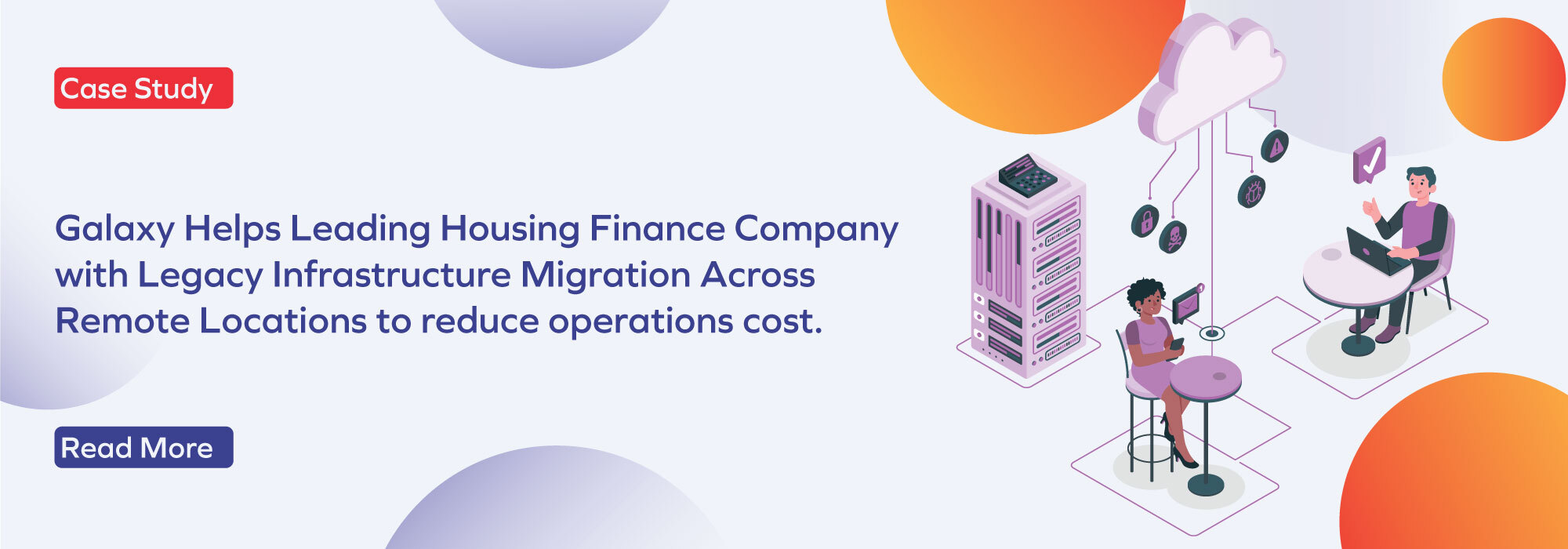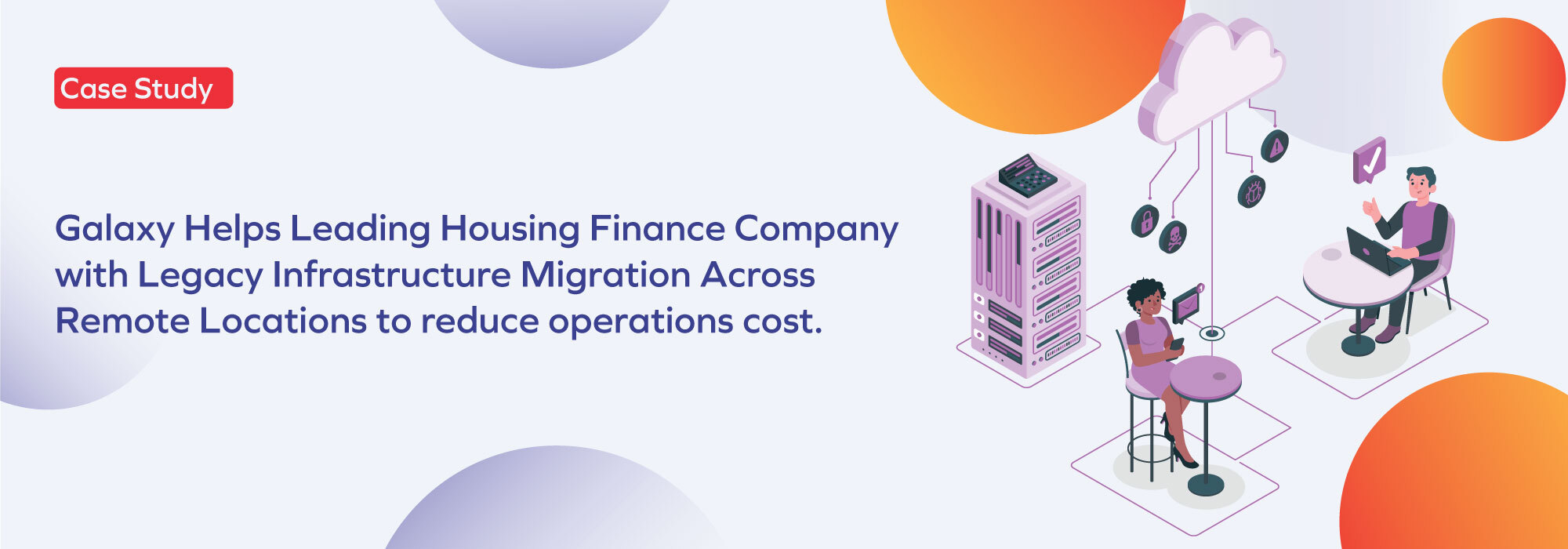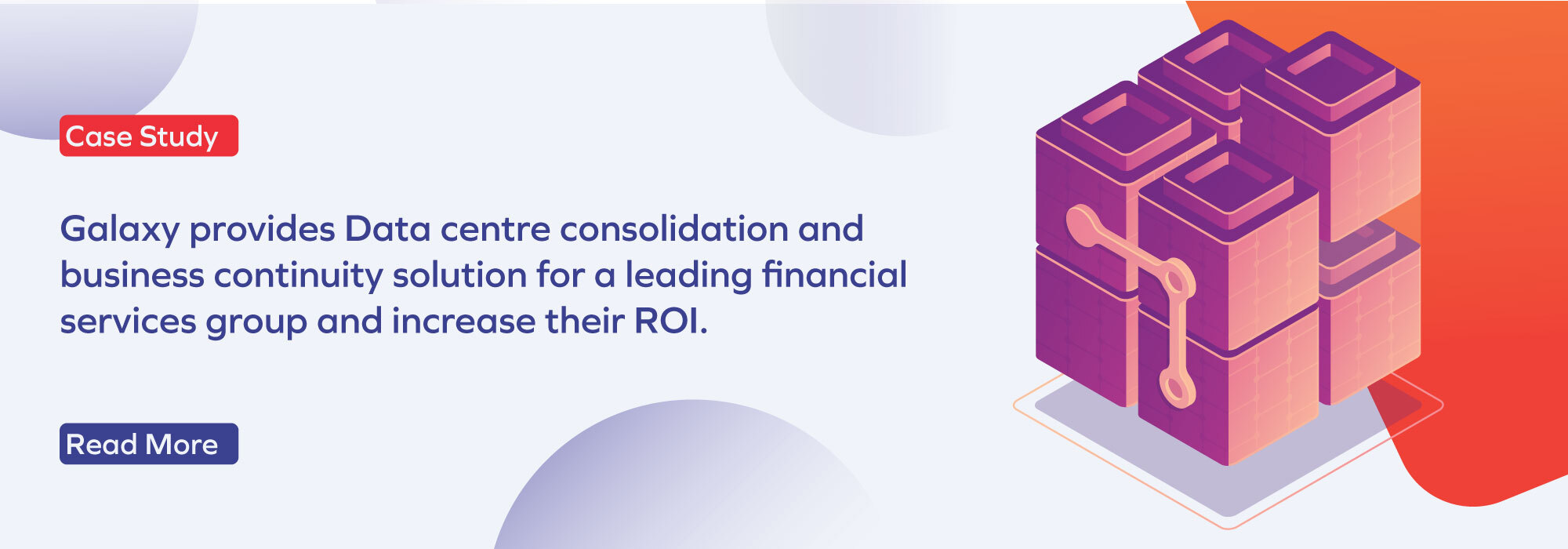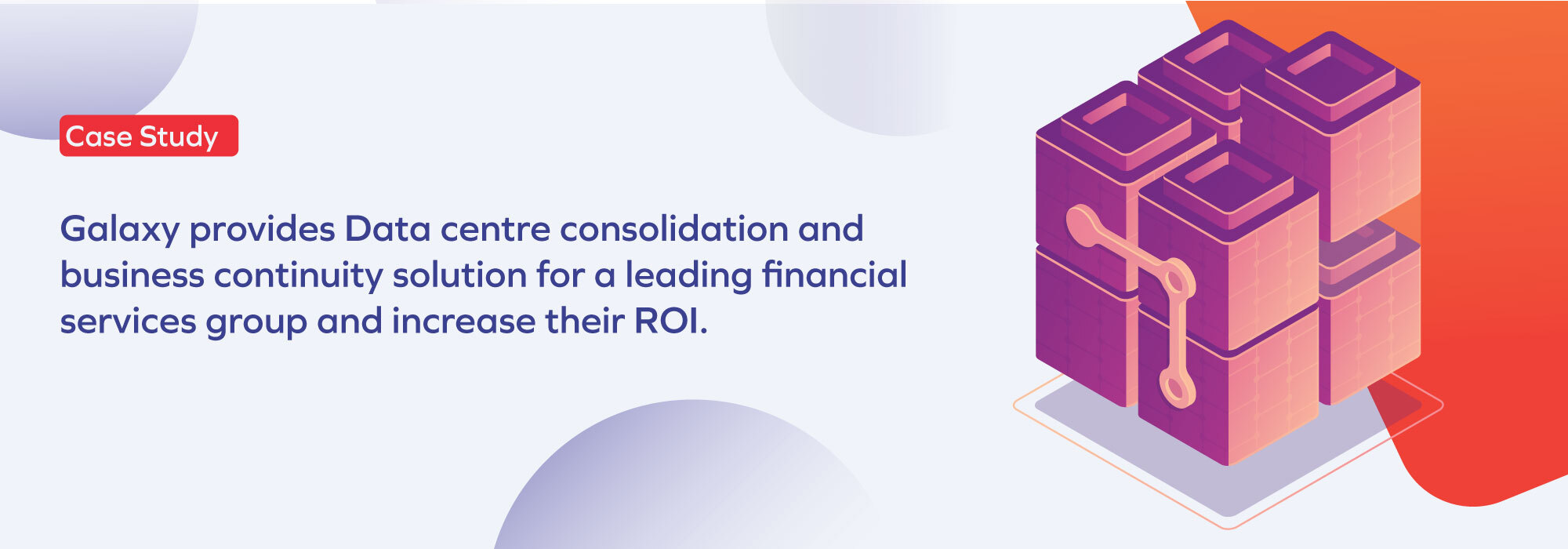
The Challenge
The Customer is a leading renewable energy solution provider across the globe, with a presence in many countries. Headquartered in India, it offers end-to-end wind-based and solar-based energy solutions right from land acquisition and lifecycle asset management, to design and construction of infrastructure necessary to tap renewable energy. This helps their own end customers optimize their desired outcomes with minimum effort and investment. The customer’s IT team was used to functioning with an array of physical servers that put a strain on available space and a few other resources as well. Likewise, their IT hardware was very old and towards end of its support life. They wanted to drive down their IT costs, improve agility as well as have scalability of IT platform to support growth. Moreover, they wanted end-to-end visibility in terms of investments in, and usage of, their overall IT infrastructure.
The Solution
Galaxy’s Data Center practice conducted a meticulous assessment of customer’s overall IT infrastructure. We recommended and also deployed vSphere with Operations Manager, on 48 hosts and 200 virtual machines within a very short timeframe. The hardware used included EMC VNX 5600 SAN, HP 3PAR All Flesh Array, 6 HP C7000 Chassis, and 48 *HP BL460G9 Blade Servers. Galaxy ensured 100% server uptime with a reliable virtualized infrastructure and maximized system performance with vSphere Distributed Resource Scheduler™ (DRS).
The Benefits
With consulting, deployment and support services offered by Galaxy, the customer reaped the following benefits:
- They now have a comprehensive visibility into their own IT hardware landscape, along with associated costs and outcomes
- It takes lesser time and resources for the customer to identify and resolve system issues post-deployment
- Their overall IT hardware costs have come down by 70%
- An improved resource planning process is in place for them to make well-informed IT investment decisions
Customer’s Chief Technology Officer said, “For the first time ever we’re able to capacity plan, to look ahead and forecast what we’re going to need for the next one, three, or five years”.

